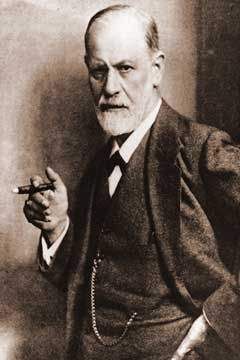Solnit, A. J. (1987a). A psychoanalytic view of play. Psychoanal. Study Child, 42:205-219.
Solnit, A. J. (1987b). Review of The interpersonal world of the infant, by Daniel Stern. J. Amer. Psychlat. Assn., 144:1508-1509.
Solnit, A. J., and Neubauer, P. B. (1986). Object constancy and early triadic relationships. Amer. Acad. Child Psychlat., 25:23-29.
Sorce, J. F; Ernde, R. N.; and Klinnert, M. (1981). Maternal emotional signaling: Its effect on the visual — cliff behavior ofone — vear — olds. Paper presented at the meeting of the Society for Research in Child Development, Boston, Mass.
Spillius, E. B. (1983). Some developments from the work of Melanie Klein. Int. J. Psychoanal., 64:321-332.
Spitz, R. A. (1945). Hospitalism: An inquiry into the genesis of psychiatric conditions in early childhood. Psychoanal. Study Child, 1:53-72.
Spitz, R. A. (1946a). Anaclitic depression: An inquiry into the genesis of psychiatric conditions in early childhood. Psychoanal. Study Child, 2:313-342.
Spitz, R. A. (1946b). Hospitalism: A follow — up report. Psychoanal. Study Child, 2:113-117.
Spitz, R. A. (1947). Grief, a peril in infancy. Film, New York Film Library. Cited in Spitz and Cobliner, 1965.
Spitz, R. A. (1950). Anxiety in infancy: A study of its manifestations in the first year of life. Int. J. Psychoanal., 31:138-143.
Spitz, R. A. (1952). Authority and masturbation: Remarks on bibliographical investigation. Psychoanal. Q., 21:490-527.
Spitz, R. A. (1953). Aggression: Its role in the establishment of object relations. In Drives, affects, behavior, ed. R. Loewenstein. New York: Int. Univ, Press, pp. 126-138.
Spitz, R. A. ( 1957). No and yes: On the genesis of human communication. New York: Int. Univ. Press.
Spitz, R. A. (1958). On the genesis of superego components. Psychoanal. Study Child, 13:375-404.
Spitz, R. A. (1959). A genetic field theory of ego formation: Its implications for Pathology. New York: Int. Univ. Press.
Spitz, R. A. (1960). Discussion of Dr. John Bowlby's paper. Psychoanal. Study Child, 15:85-94.
Spitz, R. A. (1962). Auterotism reexamined. Psychoanal. Study Child, 17:283-315.
Spitz, R. A. (1963). Life and the dialogue. In Counterpoint: Libidinal object and subject, ed. H. S. Gaskill. New York: Int. Univ. Press, pp. 154-176.
Spitz, R. A. (1964). The derailment of dialogue: Stimulus overload, active cycles, and the completion gradient. Amer. Psychoanal. Assn., 12:752-775.
Spitz, R. A. (1965). The evolution of dialogue. In Drives, affects, behavior. Vol. 2, ed. M. Schur. New York: Int. Univ. Press, pp. 170-1.90.
Spitz, R. A., and Cobliner, W. G. (1965). Thefirstyear of life. New York: Int. Univ. Press.
Spitz, R. A.; Ernde, R. N.; and Metcalf, D. R. (1970). Further prototypes of ego formation: A working paper from a research project on early development. Psychoanal. Study Child, 25:417-460.
Spitz, R. A., and Wolf, К. М. (1946). The smiling response. Genetic Psychol. Mono., 34:57-125.
Spitz, R. A., and Waif, K. M. (1949). Auterotism: Some empirical findings and hypotheses on three of its manifestations in the first year of life. Psychoanal. Study Child, 3/4:85-120.
Spruiell, V. (1975). Three strands of narcissism. Psychoanal. (44:577-595.)
Spruiell, V. (1979). Alterations in the ego-ideal in girls in mid-adolescence. In Female adolescent development, ed. Sugar. New York: Brunner/Mazel, pp. 310-329.
Spruiell, V. (1981). The self and the ego. Psychoanal. Q., 50:319-344.
Stechler, G., and Halton, A. (1987). The emergence of assertion and aggression during infancy: A psychoanalytic systems approach. Amer. Psychoanal. Assn., 35:821-838.
Stechler, G., and Kaplan, S. (1980). The development of the self. Psychoanal. Study Child, 35:85-105.
Steele, B. F. (1970). Parental abuseof infants and small children. In Parenthood, ed. E. J. Anthony and T. Benedek. New York: Little, Brown, pp. 449-477.
Steele, B. F. (1983). The effect of abuse and neglect on psychological development. In Frontiers of infant psychiatry, ed. J. D. Call, E. Galenson, and R. L. Tyson. New York: Basic Books, pp. 235-244.
Steele, B. E, and Pollock, С. В. (1968). A psychiatric study of parents who abuse infants and small children. In The battered child, ed. R. E. Heifer and С. Н. Kempe. Chicago: Univ. of Chicago Press, pp. 103-147.
Stein, M. H. (1979). Book Review: The restoration of the self by Heinz Kohut. Amer. Psychoanal. Assn., 27:665-680.
Sterba, R. F. (1942). Introduction. Psychoanalytic theory of the libido, 3rd ed. New York: Brunner/Mazel, 1968.
Stern, D. N. (1974a). Mother and infant at play: The dyadic interaction involving facial, vocal, and gaze behaviors. In The effect of the infant on its careglver. ed. M. Lewis and L. Rosenblum. New York: Wiley, pp. 187-213.
Stern, D. N. (1974b). The goal and structure of mother-infant play. J. Amer. Acad. Child Psychlat., 13:402-421.
Stern, D. N. (1977). The first relationship: Mother and infant. Cambridge: Harvard Univ. Press. Stern, D. N. (1984). Affect attunement, in Frontiers of infant psychiatry. Vol. 2, ed. J. D. Call, E. Galenson, and R. L. Tyson. New York: Basic Books, pp. 74-85.
Stern, D. N. (1985). The interpersonal world of the infant. New York: Basic Books.
Stern, D. N.; Barnett, R. K.; and Spieker, S. (1983). Early transmission of affect: Some research issues. In Frontiers of infant psychiatry, ed. J. D. Call, E. Galenson, and R. L. Tyson. New York: Basic Books, pp. 74-85.
Stoller, R. J. (1968a). Sex and gender: On the development of masculinity and femininity. New York: Science House.
Stoller, R. J. (1968b). The sense of femaleness. Psychoanal. Q., 37-42-55.
Stoller, R. J. (1976). Primary femininitv.y. Amer. Psychoanal. Assn., 24 (Suppi.): 59-78.
Stoller, R. J. (1979). Fathers of transsexual children. J. Amer. Psychoanal. Assn., 27:837-866.
Stoller, R.J. (1985). Presentations of gender. New Haven: Yale Univ. Press.
Stolorow, R. D., and Lachmann, F. M. (1978). The developmental prestagcs of defenses: Diagnostic and therapeutic implications. Psychoanal. ()., 47:73-102.
Strachey, J. (1961). Editor's introduction. In S.E., 19:3-11.
Sutherland, J. D. (1980). The British object relations theorists: Balint, Winnicott, Fairbairn, Guntrip.y. Amer. Psychoanal. Assn., 28:829-860.
Tennes, K., and Lampi, E. (1964). Stranger and separation anxiety in infancy. J. Nerv. Merit. Dis., 139:247-254.
Ticho, E. A. (1982). The alternate schools and the self. J. Amer. Psychoanal. Assn., 30:849-862.
Ticho, G. (1976). Female autonomy and young adult women. Amer. Psycho-anal. Assn., 24:139-156.
Tolpin, M. (1971). On the beginnings of a cohesive self: An application of the concept of transmuting internalization to the study of the transitional object and signal anxiety. Psychoanal. Study Child, 26:316-352.
Tolpin, M. (1978). Self-objects and oedipal objects. Psychoanal. Study Child, 33:167-184.
Tornkins, S. S. (1962). The positive affects. Vol. 1 of Affect, imagery, consciousness. New York: Springer.
Tornkins, S. S. (1963). The negative affects. Vol. 2 of Affect, imagery, consciousness. New York: Springer.
Tornkins, S. S. (1970). Affect as the primary motivational system. In Feelings and emotions: The Loyola Symposium, ed. M. B. Arnold. New York: Academic Press, pp. 101 — 110.
Tornkins, S. S. (1978). Script theory: Differential magnification of affects. In Nebraska Symposium on Motivation. Vol. 26, ed. E. H. Howe, Jr., and R. A. Diestbier. Lincoln: Univ. of Nebraska Press, pp. 201-236.
Tornkins, S. S. (1981). The quest for primary motives: Biography and autobiography of an idea. Personal. Soc. Psychol., 41:306-329.
Tronick, E.; Als, H.; Adamson, L.; Wise, S.; and Brazelton, Т. В. (1978). The infant's response to entrapment between contradictory messages in face—to—face interaction. J. Amer. Acad. Child Psychiat., 17:1-13.
Tronick, E.; Als, H.; and Brazelton, Т. В. (1977). The infant's capacity to regulate mutuality in face-to-face interaction. J. Communication, 27:74-80.
Tronick, E. Z., and Gianino, A. (1986). Interactive mismatch and repair. Zero to Three, 6:1-6.
Tyson, P. (1978). Transference and developmental issues in the analysis of a prelatency child. Psychoanal. Study Child, 33:213-236.
Tyson. P. (1980). The gender of the analyst: In relation to transference and countertransference manifestations in prelatency children. Psychoanal., 35:321-338.
Tyson, P. (1982a). A developmental line of gender identity, gender role and choice of love object. Amer. Psychoanal. Assn., 30:59-84.
Tyson, P. (1982b). The role of the father in gender identity, urethral eroticism, and phallic narcissism. In On fathers: Observations and reflections, ed. S. Cath, A. Glirwitt, and J. Ross. Boston: Little, Brown, pp. 175-187.
Tyson, P. (1986a). Female psychological development. Ann. Psychoanal., 14:357-373.
Tyson, P. (1986b). Male gender identity: Early developmental roots. Psychoanal. Rev., 73:405-425.
Tyson, P. (1988). Psychic structure formation: The complementary roles of affects, drives, object relations, and conflict. J. Amer. Psychoanal. Assn., 36 (Suppl.):73-98.
Tyson, P. (1989a). Two approaches to infant research: A review and integration. In The significance of infant observational research for clinical work with children, adolescents and adults, ed. S. Dowling and A. Rothstein. Madison, Conn.: Int. Univ. Press, pp. 3-21.
Tyson, P. (1989b). Infantile sexuality, gender identity, and obstacles to oedipal progression. J. Amer. Psychoanal. Assn., 37:1051-1069.
Tyson, P. (in press). The adolescent process and adult treatment. The significance of child and adolescent analysis for clinical work with adults, ed. S. Dowling and A. Rothstein. New York: Int. Univ. Press.
Tyson, P., and Tyson, R. L. (1984). Narcissism and superego development. J. Amer. Psychoanal. Assn., 32:75-98.
Tyson, R. L. (1983). Some narcissistic consequences of object loss: A developmental view. Psychoanal. Q., 52:205-224.
Tyson, R. L. (1986). The roots of psychopathology and our theories of development. Amer. Acad. Child Psychot., 25:12-22.
Tyson, R. L. (1989). Psychological conflict in childhood: Adevelopmental view. Paper presented at the Seminar for Clinicians, American Psychoanalytic Association, New York.
Tyson, R. L. (in preparation). The psychoanalysts of the relatency child.
Van Leeuwen, K. (1966). Pregnancy envy in the male. Int. J. Psychoanal., 47:319-324.
Vigotsky, L. S. (1934). Thought and language. New York: MIT Press, 1962.
Waclder, R. (1930). The principle of multiple function: Observations on overdetermination. In Psychoanalysis: Observation, theory, application, ed. S. A. Guttman. New York: Int. Univ. Press, 1976, pp. 68-83.
Waelder, R. (1932). The psychoanalytic theory of play. In Psychoanalysts: Observation, theory, application, ed. S. A, Guttman. New York: Int. Univ. Press, 1976, pp. 84-100.
Waelder, R. (1936). The problems of the genesis of psychic conflict in earlier infancy. In Psychoanalysis: Observation, theory, application, ed. S. A. Guttman. New York: Int. Univ. Press, 1976, pp. 121-188.
Walleretein, J. S., and Kelly, J. B. (1980). Sunning the breakup. New York: Basic Books.
Wallerstein, J. S., and Blakeslee, S. (1989). Second chances. New York: Ticknor and Fields.
Wallerstein, R. S. (1981). The bipolarself: Discussion of alternate perspectives. J. Amer. Pfychoanal. Assn., 29:377-394.
Wallerstein, R. S. (1983). Defenses, defense mechanisms, and the structure of the mind. J. Amer. Psychoanal. Assn., 31:201-225.
Wallerstein, R. S. (1988). One psychoanalysis or many? Int. J. Psychoanal., 69:5-22.
Weil, A. P. (1970). The basic core. Psychoanal. Study Child, 25:442-460.
Weil, A. P. (1976). The first year: Metapsychological inferences of infant observation. In The process of child development, ed. P. Neubauer. New York: Aronson, pp. 246-265.
Weil, A. P. (1978). Maturational variations and genetic — dynamic issues. J. Amer. Psychoanal. Assn., 26:461-491.
Weinshel, E. M. (1970). Some psychoanalytic considerations on moods. Int.J. Psychoanal., 51:313-320.
Weissman, P. (1954). Ego and superego in obsessional character and neurosis. Psychoanal. Q., 23:529-543.
Werner, H., and Kaplan, B. (1963). Symbol formation. New York: Wiley.
Widzer, M. E. (1977). The comic — book superhero: A study of the family romance fantasy. Psychoanal. Study Child, 32:565-604.
Williams, M. (1972). Problems of technique during latency. Psychoanal. StudyChild, 27:598-617.
Winnicott, D. W. (1949). The ordinary devoted mother. In Boundary and space, ed. M. Davis and D. Wallbridge. New York: Brunner/Mazel, 1981, pp. 125-130.
Winnicott, D. W. (1952). Anxiety associated with insecurity. In Collected papers. New York: Basic Books, 1958, pp. 97-100.
Winnicott, D. W. (1953). Transitional objects and transitional phenomena. In Playing and reality. New York: Basic Books, 1971, pp. 1-25.
Winnicott, D. W. (1956). Primary maternal preoccupation. In Collected papers. New York: Basic Books, 1958, pp. 300-305.
Winnicott, D. W. (1959). The fate of the transitional object. In Psychoanalytic explorations, ed, C. Winnicott, R, Shepherd, and M. Davis. Cambridge: Harvard Univ. Press, 1989. pp. 53-58.
Winnicott, D. W. (1960). Ego distortion in terms of true and false self. In The maturation processes and the facilitating environment. New York: Int. Univ. Press, 1965, pp. 140-152.
Winnicott, D. W. (1962a). Ego integration in child development. In Thematura — tional processes and the facilitating environment. New York: Int. Univ. Press, 1965, pp. 56-63.
Winnicott, D. W. (1962b). The theory of the parent-infant relationship. In The maturattonal processes and the facilitating environment. New York: Int. Univ. Press, 1965, pp. 37-55.
Winnicott, D. W. (1965). The maturattonal processes and the facilitating environment. New York: Int. Univ. Press.
Winnicott. D. W. (1967). Mirror — role of mother and family in child development. In Playing and reality. New York: Basic Books, 1971, pp. 111-118.
Winnicott, D. W. (1971). Playing and reality. New York: Basic Books.
Wolf, E. S. (1988). Case discussion and position statement. Plychoanal. Inq., 8:546-551.
Wolff, P. H. (1959). Observations on newborn infants. Psfchosom. Mcd., 21:110-118.
Wolff, P. H. (1960). The developmental psychologies of Jean Piaget and psycho-analysis Psychological Issues, Monograph 5. New York: Int. Univ. Press.
Wolff, P. H. (1966). The causes, controls, and organization of behavior in the neonate. Psychological Issues, Monograph 17. New York: Int. Univ. Press.
Wolff, P. H. (1981). Normal variation in human maturation. In Maturation and development, ed. K. J. Connolly and H. F. R. Prechtl. London: Heinemann, pp. 1-18.
Yakoviev, P. L., and Lecours, A. P. (1967). The myelogenetic cycles of regional maturation of the brain. In Regional development of the brain in early life, ed. A. Minkowski. Oxford: Blackwell, pp. 3-70.
Yasmajian, R. V. (1966). The tesies and body — image formation in transvestitism. Amer. Psychoanal. Assn., 14:304-312.



